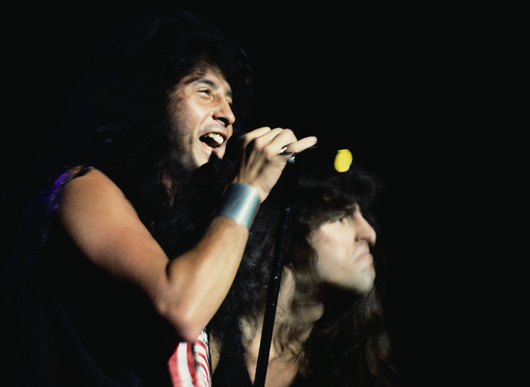
Anthrax
To kick off our A-Z of Heavy Metal, it's time to get back to the 1980s and down in the mosh pit. Three of the Big Four bands that dominated thrash metal in the 1980s were from California - but Anthrax did New York City proud.
The band's two main eras consist of the frantic power thrash of the Joey Belladonna-fronted 1980s (key album: 1987's Among The Living), and the alternative metal reinvention with singer John Bush in the 1990s (key album: 1993's Sound Of White Noise).
Along the way they've been caught in a mosh of line-up changes and pioneered rap metal with Public Enemy.
After a 2005 reunion with Joey then a failed spell with new singer Dan Nelson, it looks like they might be finally back on track again with John Bush. Fingers crossed.
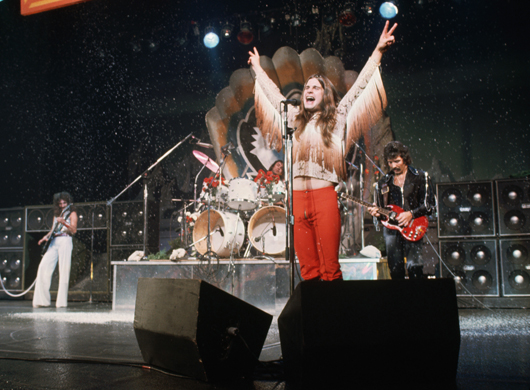
Black Sabbath
It began with rainfall and the toll of a mourning bell, before the unholy thunder of a three-note riff that would provide a catalyst for the next 40 years of heavy metal…
The song, the album and the band: Birmingham's finest, Black Sabbath.
Guitarist Tony Iommi's monolithic blues riffs are still the genre distilled in its purest, darkest form and Sabbath's first six albums remain an essential right of passage for any budding metaller.

Circle pit
An evolution - of sorts - from the mosh pit which traces its roots back to punk rock shows. If moshing involves a kind of organised jostling in the crowd then the circle pit structures it further.
Just as playing aggressive metal is a release for the musicians, this is a release for the fans.
Bumper cars with people is one way of looking at it but the circle pit involves those people running in a - you guessed it - circle rather than random directions.
However, in recent years, circle pits have become so efficient and expected that participants rarely collide.
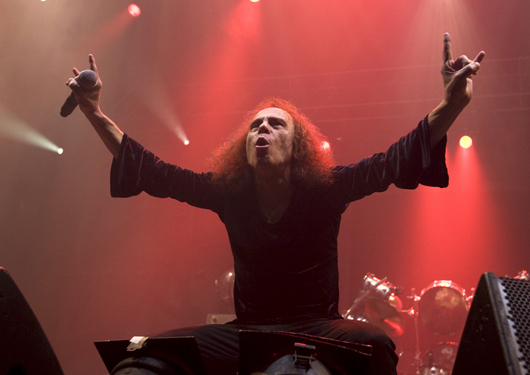
Dio
The name is Italian for God. Which is just as well because Ronnie James (born Ronald James Padavona, 10 July 1942) is metal's best candidate for one.
If fronting two legendary bands (Rainbow and Black Sabbath) wasn't enough, Dio then formed his own eponymous band, unleashing an indisputable classic with 1980's Holy Diver. He also brought the iconic devil horn hand signal to metal along the way.
After nearly 50 years in the business, you'd think the 67-year-old would be cutting back. That's not what Dio does.
In 2007 he reunited with his former Sabbath bandmates in Heaven & Hell and taught the young pups how it's done with this year's Devil You Know album.
D is also for Doom Metal - slow, sludgy, riff-laden and heavier than a Kuwaiti tanker, this subgenre owes everything to pioneers Sabbath and their peers from the US, Pentagram.
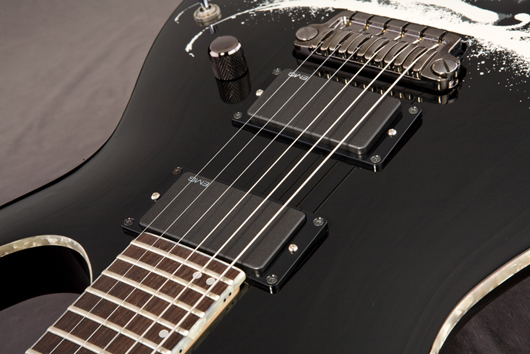
EMG 81
Meet the EMG 81: the unsung, battery-powered hero that fuels the fire in those pointy guitars you've been lusting after for years.
EMG's active humbucker was born in 1979, along with it's perfect partner the EMG 85 (the 81 in the bridge position, 85 in the neck), and ended up providing the cutting leads and brutal chug on classic albums from Metallica's Kirk Hammett and James Hetfield plus Slayer's Kerry King and Jeff Hanneman.
Since then the list of metal players relying on them for tone is longer than a Dream Theater drum solo. Killswitch Engage's Joel Stroetzel and Adam Dutkiewicz are but two...
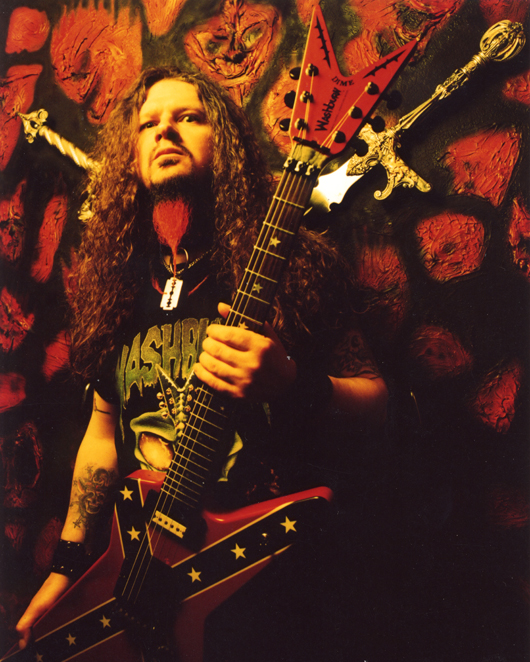
Fallen heroes
Metal has had its fair share of talents that died far too soon. But let's be grateful for what they left us.
Randy Rhoads' jaw-dropping leads on the first two Ozzy Osbourne albums.
Cliff Burton's bass chops and compositional genius that will inspire his Metallica bandmates - and indeed countless metal musicians - for the rest of their lives…
Dimebag's sublime southern style that fed us through the drought of US metal talent that was the 1990s.
Chuck Schuldiner, the godfather of death metal.
Respect all.
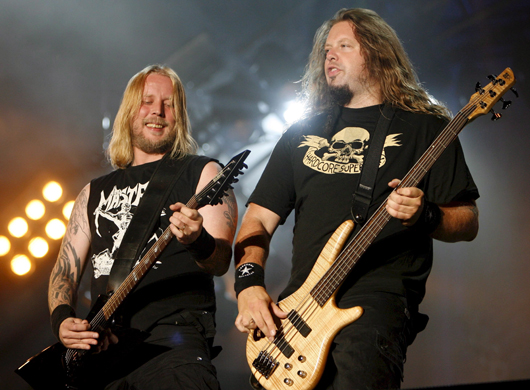
Gothenburg
While US metal's cup didn't exactly runneth over with successors to carry thrash's torch in the 1990s, over in Sweden metal was in much ruder health.
Three distinct bands - At The Gates, In Flames and Dark Tranquillity - based in the country's metal Mecca managed to take Iron Maiden's harmonic blueprint and somehow infuse it with the extremities of death metal.
The result was 'melodic death metal' and in turn it would inspire a whole heap of US bands such as Killswitch Engage, Shadows Fall and Trivium.
We reckon that they must have been putting something in the water over there.
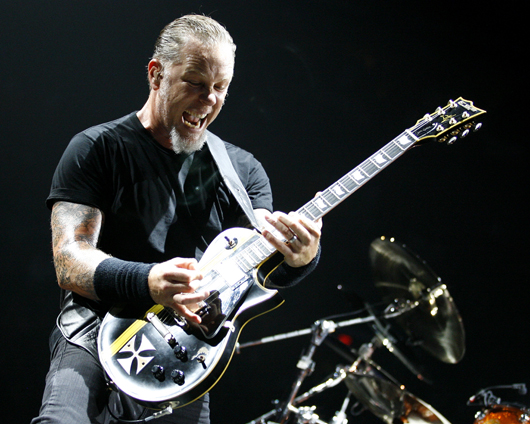
Hetfield
If Metallica's essence can be traced back to one person, it's James Hetfield. The band's singer, rhythm guitarist and principal songwriter is arguably the most influential musician in heavy metal.
Hetfield is the standard by which a metal frontman should be measured and his right hand alone puts him at the very top of the tree when it comes to great rhythm players of our time.
And did we mention the albums?
Master Of Puppets, ...And Justice For All, Ride The Lightning, Kill 'Em All, the eponymous ‘Black Album’... If they're not on your shelf, where have you been? Just skip St Anger. You might want to give Load and Reload a miss as well. Those apart, listen and learn.
H is also for headbanging. Metal’s own unique dance, involving the intense front to back shaking of the head in time to the music. A health and safety officer’s worst nightmare due to the strain on the ‘banger’s neck, not to mention the related sweat-in-eye injuries for those stood directly behind…
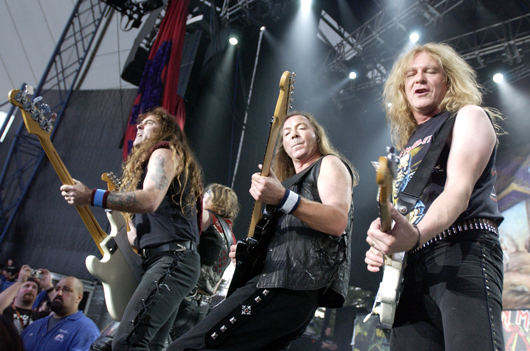
Iron Maiden
The definitive heavy metal band? Iron Maiden's first seven albums (made in just eight years!) make for a very, very convincing argument.
The songs say enough but the very imagery of heavy metal owes everything to Iron Maiden and their Derek Riggs-designed mascot Mr Edward the Head.
Iconic barely describes it. Maiden have become the byword for everything metal should aspire to be. And they're still going strong and loved from Beijing to Brighton.
If you're new to the band we recommend starting with Live After Death. Recorded at the Long Beach Arena shows of Maiden's World Slavery tour in 1985, it's the best live album ever.
Really.
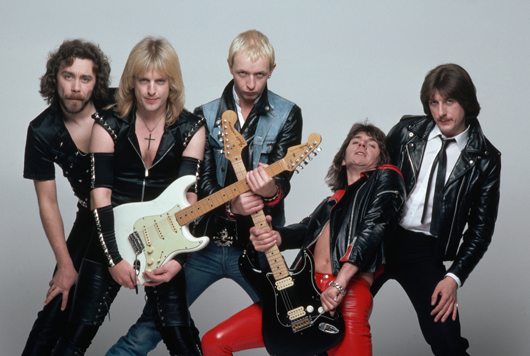
Judas Priest
Another essential foundation of the genre to emerge from darkest Birmingham in the late 1960s - and this one's hell bent for leather.
Judas Priest have never abandoned the path of pure metal - even for the two albums where their signature voice Rob Halford departed to be replaced by American Tim 'Ripper' Owens.
With the razor sharp riffs of the twin axe attack from guitarists KK Downing and Glen Tipton, they've weathered the storms while metal passed in and out of favour.
Now with Halford back they're still brave enough to put out a double concept album about a 16th Century seer (2008's Nostradamus) while delivering the metal goods. Respect.

Korn
Nu metal originated with one band and one band only: Korn. Just as definitively, it was one album - their pioneering self-titled debut - that set, nay created the scene.
Although spoken about like herpes in 2009, nu metal was actually vital in democratising musical ability after the shred-happy 1980s. By the mid-1990s, downtuned grooves and angst were in, sweep picking and falsetto were out and nothing distilled it more than this Bakersfield five-piece.
The style got old, fast and Korn never quite equalled their 1994 debut but it's easy to forget just how startlingly original it was at the time.
Fact: that there would certainly be no Slipknot if it hadn't been made.
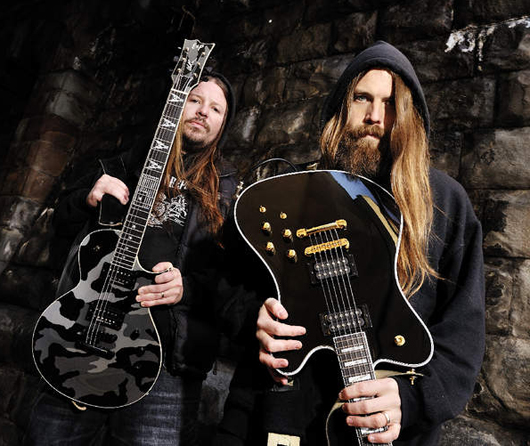
Lamb Of God
The new Pantera? Slayer Mk II? Lamb Of God are none of these things - the greatest band in the 21st century wave of American heavy metal are their own religion.
This Virginia outfit have earned their stripes the hard way.
Starting out under the name Burn The Priest they've toured, toured and toured some more, all the while sharpening their ferocious and technical chops to devastating effect on albums like Ashes Of The Wake and (number two on the US Billboard charts) Wrath.
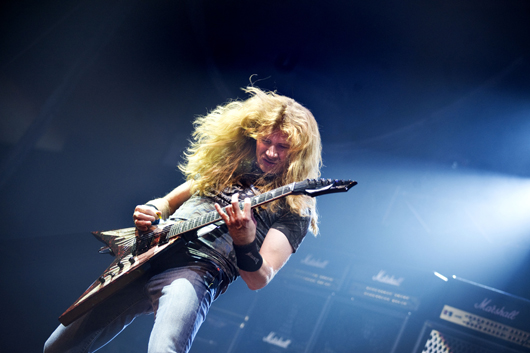
Mustaine
Arguably the most charismatic and opinionated personality in heavy metal. The one-time Metallica lead guitarist who set out to prove what a mistake Hetfield and co had made in firing him by taking on the world with a band of his own.
And prove it he did. Mustaine had a direct influence on every guitarist that mattered in thrash and in the course of his career with Megadeth has created stone cold classics with Peace Sells... But Who's Buying? and Rust In Peace.
Snarling and technical metal albums filled to the brim with attitude. Much like the mastermind behind them.
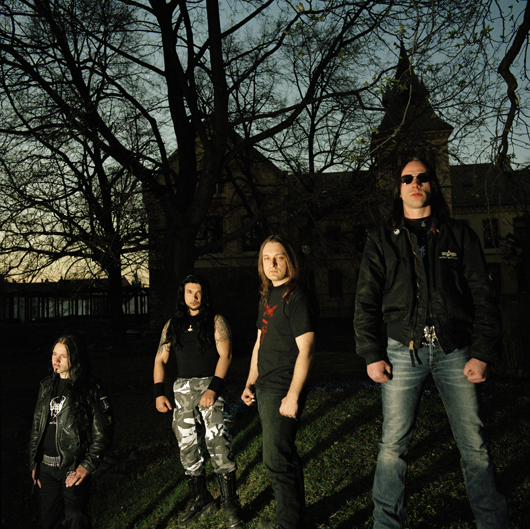
Norwegian Black Metal
Hip-hop had the East vs West Coast feud. Metal got church burnings and murder via a collection of rather intense young men from Scandinavia.
The second wave of black metal had Norway as its epicentre - but as pioneering as bands like Emperor, Mayhem and Darkthrone were with the powerful atmospheres of their grim extreme metal, the early Nineties peak of the scene is now remembered by many for its shady ideology and illegal activities.
Church burnings were only the half of it - things really hit rock bottom when Burzum's suspected arsonist-in-residence Count Grishnackh (or Varg Vikernes to his mum and close friends) decided to stab Mayhem guitarist Euronymous (Øystein Aarseth) to death in 1993.
He was released from prison on parole in May. Check here for a classic Vikernes interview from the ever-brilliant Metal Hammer. Scary, scary man.
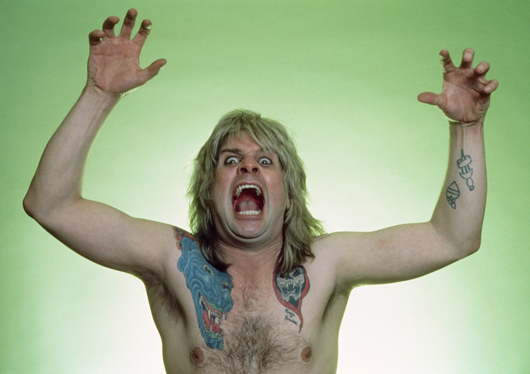
Ozzy Osbourne
Such is the fame of the Ozzman, he's now known by more people for his bumbling comic shenanigans in a documentary series than for being the original frontman of The Most Important Metal Band Of All Time.
That's Black Sabbath, by the way.
In between he's found time for a successful solo career as well as urinating on the Alamo and biting the head off a bat.
As the original hellraiser, he's got a greater right than most to play fast and loose with his credibility nowadays.
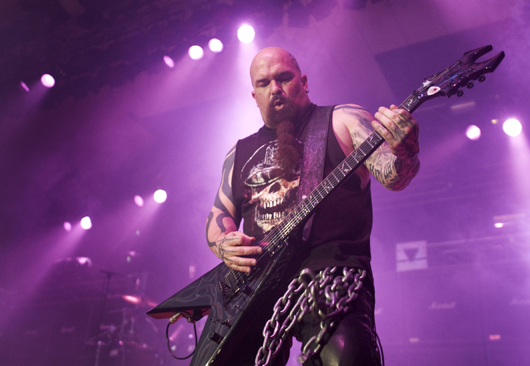
Palm muting
Some things are so synonymous with the sound of heavy metal that it's easy to take them for granted. A palm-muted powerchord on a guitar is the foundation for heaviness.
Place the side of your picking hand (not actually the palm) across the strings you're playing close to the bridge - muting them - and then chug away! An accompanying grimace or sneer is nigh-on essential.
It has to be said that P is also for Pantera: The premier US metal band of the 1990s: groove, technical finesse and southern swagger. And that was just their six-stringer 'Dimebag' Darrell Abbott. RIP.
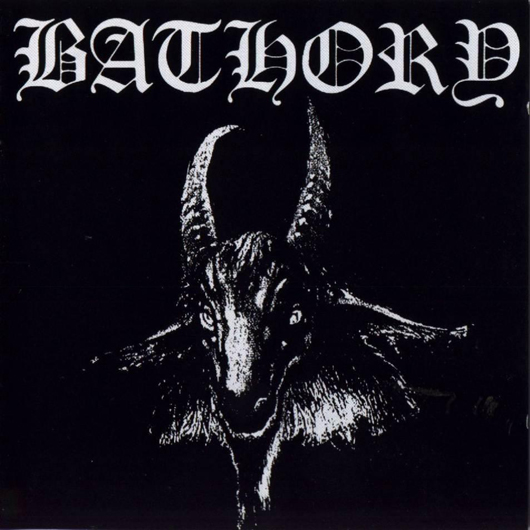
Quorthon
…aka Tomas Forsberg.
An unsung hero outside extreme metal, this late Swede is credited with not just kickstarting black metal with his band Bathory, but also introducing the Norse themes that would inspire many more in folk and viking metal with albums such as Under The Sign Of The Black Mark and Hammerheart.
Hugely influential without ever playing a live show, Forsberg tragically passed away from heart failure aged only 38 on 3 June 2004.
Tribute albums abound as do bands influenced by Bathory but nothing can beat those early 1980s releases.
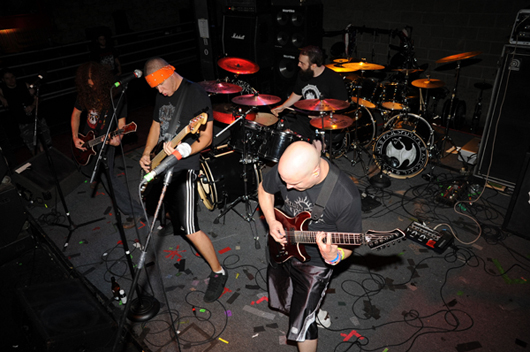
Rumplestiltskin Grinder…
...and all the other ridiculously monikered bands out there. Where would metal be without them?
Because Tolkien's Lord Of The Rings can only inspire a paltry 24,689,453 band names (including Gorgoroth, Amon Amarth, Sauron, Isengard and, of course, Cirith Ungol), metal musicians have had to look far and wide for inspiration.
And they have! Thus we 'proudly' present MusicRadar's Most Ridiculously-Named Metal Bands Of All Time Roll Of Honour. We give you…
Goatwhore
Pungent Stench
Satans [sic] Penguins
Cattle Decapitation
Vomitory
Cannibal Corpse
Pig Destroyer
Rhapsody Of Fire
Chinchilla
Dragonforce
Farmer Boys
Narnia
Kamelot
Septic Flesh
Power Quest
Crotchduster...
…and to all the other bands named after bodily functions or mythical kingdoms (or both), we salute you!
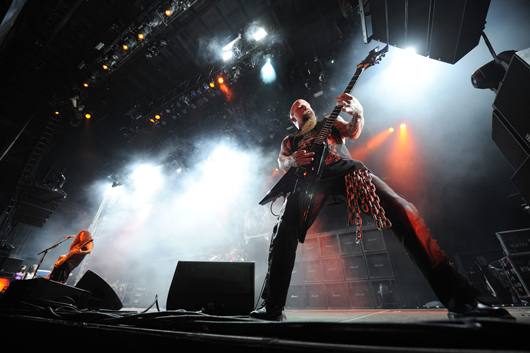
Slayer
Of thrash's original big four, only Slayer can be said to have remained on the righteous path of their metal.
Megadeth and Metallica went for radio play while Anthrax changed singers and tack. Slayer, meanwhile kept relatively true to their favoured themes - religious corruption, Satan, war and serial killers.
While still going strong, it's their earlier unholy trinity of albums that are essential: the hugely influential 28-minutes of hyper speed metal that is Reign In Blood (1986), 1988's more melodic mid-tempo South Of Heaven and the hellish halfway house between the two that is Seasons In The Abyss (1990).
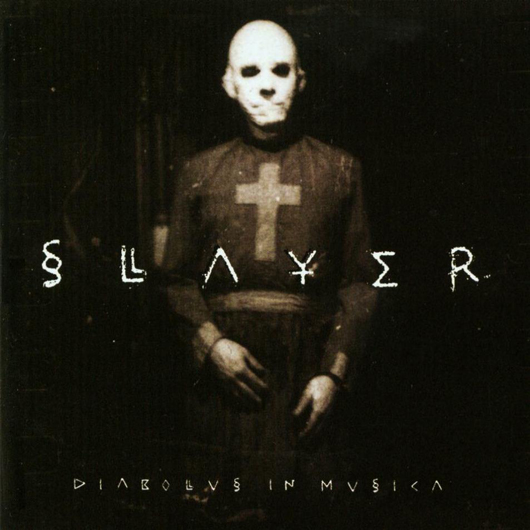
Tritone
So integral to metal, Slayer made a whole album in tribute under its other name: the Diabolus In Musica ("the devil in music").
Diabolus In Musica is a musical interval that spans three whole tones and pops up frequently in heavy metal; most famously in Black Sabbath's self-titled song. Metallica's Enter Sandman and Diamond Head's Am I Evil are other examples.
Away from metal, classical composer Gustav Holst used it to convey the power of Mars, the Bringer Of War in his The Planets suite.
Such are the tritone's devilish connotations, the church banned its use in the middle ages.
T is also for This Is Spinal Tap, because nothing has ever lambasted metal so accurately and amusingly as the 1984 mockumentary.
Is this where we insert the Tap quote?
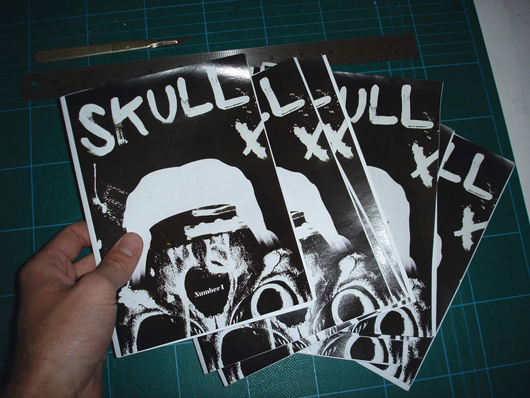
Underground
While Ozzy Osbourne might pop up in The Sun and Metallica have sold over 100 million albums, metal as a whole is still not mainstream.
The essence of metal's sound and image makes it underground - an alternative choice from the norm that is still misunderstood and maligned with negative stereotypes.
A case in point is the British band Iron Maiden, who have become one of the world's biggest and best loved bands ever without anything in the way of consistent longterm exposure in the mainstream media.
Why? Because they're metal.
Nevertheless some subgenres are more underground than others, often based on the reduced accessibility of their sound: e.g death and black metal.
Do we care? Do we hell.
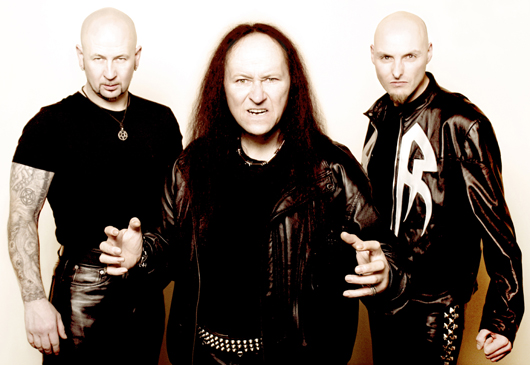
Venom
How three lads from Newcastle inspired the biggest metal band in the world and inadvertently named a genre.
With their stage names Cronos (Conrad Lant), Mantas (Jeffrey Dunn) and Abaddon (Anthony Bray), the classic line-up of Venom were already setting a precedent for showmanship that would be picked up by later bands.
But it was the sound of their 1981 Welcome To Hell debut that would inspire so many with its groundbreaking speed and Bulldozer Bass sound. Indeed none more so than the young musicians who would form Metallica and support them on tour in 1984.
But while Venom's satanic themes, harsh vocals and stage attire were somewhat tongue in cheek, over in Scandinavia it was all taken with utter seriousness. So much so that a whole movement was spawned in namesake of Venom's second album from 1982.
Black Metal.
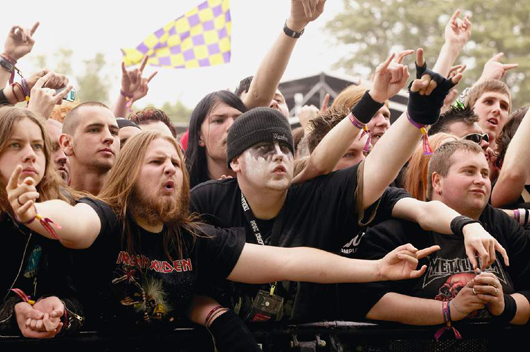
Wear black!
It's perhaps ironic that metal's rejection of the mainstream and emphasis on individualism has resulted in a strict uniform - black clothes and long hair.
Make no mistake: image matters a lot in metal.
Over the years, and through the different variations of the music there have been trends and changes: the New Wave Of British Heavy Metal's patch-covered denim jackets, thrash's drainpipe jeans and cut-off t-shirts, nu metal's baggy trousers and wallet chains.
MusicRadar advises that you check with your nearest metal representative about which look applies to your preferences before you make a regrettable faux pas at a local metal night.
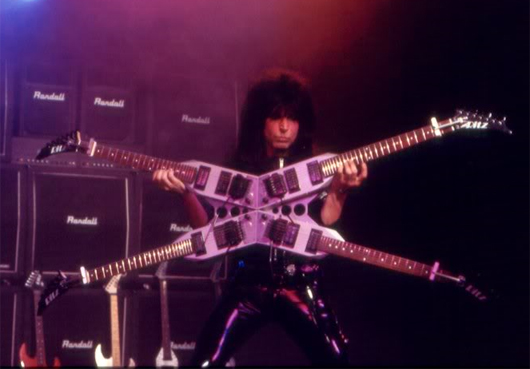
X marks the spot
Introducing the most OTT metal guitar of all time: Michael Angelo Batio's Quad Guitar. Why play one guitar when you can play four… at once?!
The original Quad was designed by the ambidextrous former Nitro guitarist Batio and built by the legendary Californian guitar guru Wayne Charvel. Watch the line between genius and insanity blur here.
The two top necks had seven strings each while the bottom had six. Unfortunately it was stolen after a Nitro show in El Paso but half of it was recovered in 2004. However, Dean Guitars build a whole new MAB Quad for the virtuoso earlier this year - the Armorflame!
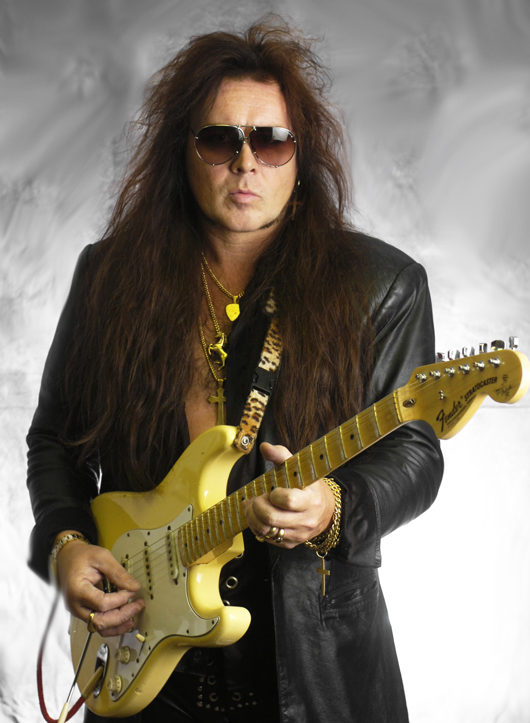
Yngwie Malmsteen
Another shredder - and one of the most noteworthy metal virtuosos in the last 30 years.
Malmsteen took equal influence from Ritchie Blackmore and 19th century violinist Paganini to bring the neo-classical style of lead playing to the fore with his 1984 debut Rising Force.
It was a landmark album and jaws justifiably dropped at his high speed sweep picking (not to mention silk shirts).
The Ferrari and Rolex-fixated virtuoso was also the second Fender player after Eric Clapton ever to be honoured with a signature Strat.
Named The Duck due to a Donald Duck sticker pasted on the headstock, Malmsteen's 1972 Strat features the unusual scalloped fretboard he favours to aid his speedy runs.
The Duck is actually not the Swede's favorite Strat, but it's one of the best-sounding ones that he owns. And as his online gallery shows, he owns quite a lot…
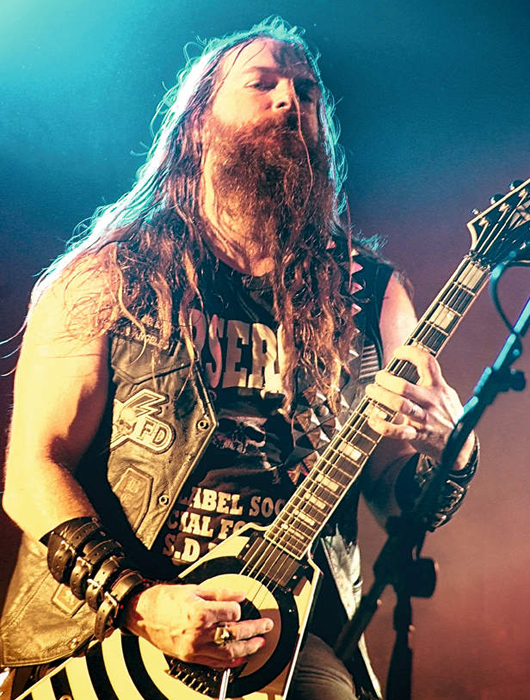
Zakk Wylde
This berserker with an endless armoury of pinched harmonics is the embodiment of the metal spirit - whether he's backing up Ozzy Osbourne or leading his own band Black Label Society.
Charismatic guitar heroes are in short supply in the 21st century - so we should take a moment to appreciate this one.
Although Wylde's recently been given the shove from Ozzy's band and replaced by Greek Gus G and has had to give up his beloved beer recently due to blood clots in his lungs, we're looking forward to hearing Zakk coming back with BLS in 2010.

Rob is the Reviews Editor for GuitarWorld.com and MusicRadar guitars, so spends most of his waking hours (and beyond) thinking about and trying the latest gear while making sure our reviews team is giving you thorough and honest tests of it. He's worked for guitar mags and sites as a writer and editor for nearly 20 years but still winces at the thought of restringing anything with a Floyd Rose.